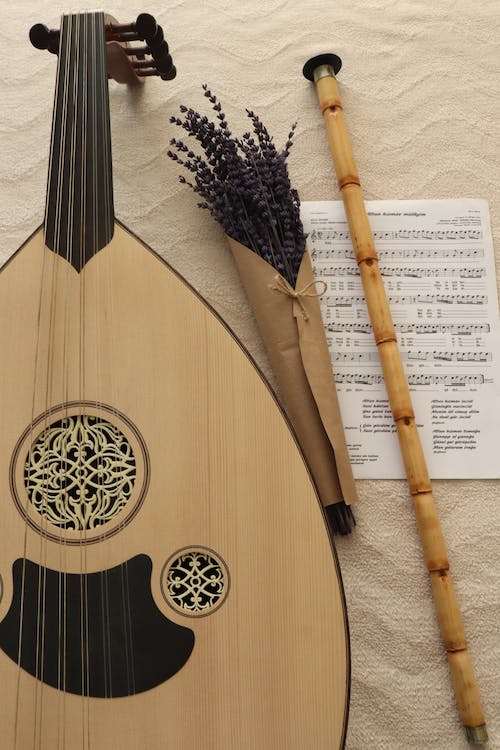The oud is a stringed instrument that comes from the Lute family. The word ‘oud’ is an Arabic term that represents several varieties of important, as well as natural woods that are used in making this instrument. Although it seems quite similar with the lute, the oud has a shorter neck and has no frets. Since this instrument has no frets, the oud is much easier to use in playing microtonal and Maqams scales. It also has eleven to thirteen strings, which are grouped into five or six courses. Interestingly, many had argued that this instrument is the main instrument that is used in Arabic music. However, it is still commonly played in West Asian, as well as in North African countries.
There are several varieties of beliefs regarding where this instrument had originated. Some believed that it involved the devil asking the people of David to trade all of their instruments in for a mystical instrument, the oud. However, most commonly, many people believed that this instrument is a combination of the barbiton and barbat. The earliest evidence of the oud as a descendant of the barbat has been shown during the 1st century BC, in Northern Bactria. It was proven that the barbat was used by Arabs in the 6th and 7th century. It was stated that during that time was when the oud has been developed, although it is slightly different from the original barbat.
The new variation of the barbat had a wooden top, in comparison to the barbat’s animal skin top. As well as that, this new variation that was made by Al Nadr, was called ‘Ud.’ In the 8th and 9th century, Islamic musicians have fled to Iberia taking an instrument which they now called ‘Oud.’ Following that, this lute was developed in Europe and had become the central instrument in Arabic music. For over centuries, the oud has only four strings, unlike the modern instrument nowadays which could have about thirteen strings. However, in the 13th century, the oud’s fifth string was added, as the beginning of its modernization process.
Interestingly, there is an oud called the Zenne Oud. This one’s a smaller version of oud and was often translated as a ‘women’s oud’ and ‘female oud.’ This instrument was designed for players that have smaller hands and fingers. The Zenne oud usually has a scale length of about 55 to 57 centimeters, instead of the regular size of 58. 5 centimeters or 60 to 62 centimeters. There is also another oud called Oud Kumethra, also known as the ‘pregnant oud.’ This type of oud has a pear shaped-like body that is most commonly found in Egypt.
In tuning the oud, one might find it quite difficult since it has several strings. There are two prominent method in tuning this instrument; one is the Turkish method, and the other is the Arabic method. In playing with Turkish tuning, the pitch is one steep higher compared to the Arabic tuning. Meaning, if a string on the oud is tuned in an Arabic pitch of the Turkish instrument would have a pitch of D. Meanwhile, in the highest four strings, both the Turkish and Arabic tuning are tuned in fourths. Also, the two bass strings courses are tuned in several variety of ways, but most common tuning in Arabic style is in C, F, A, D, and G. Additionally, the main things in all of this is to make sure that the player has an authentic string that suits the instrument.
Learning to play the instrument is a difficult process, too. The first thing you need to pick is to get used on how It feels. The other thing is that you will need to get used to plucking the oud with a plectrum called, Risha. After getting accustomed to the general feel of the instrument, you will need to start with some scales. With your instrument tuned in Arabic tuning, the major scale of C will be the easiest one to learn. Many current Arabic players use the tuning C2, F2, A2, D3, G3, and C4. In Turkish tuning, the major scale of D should be the first one to try.

